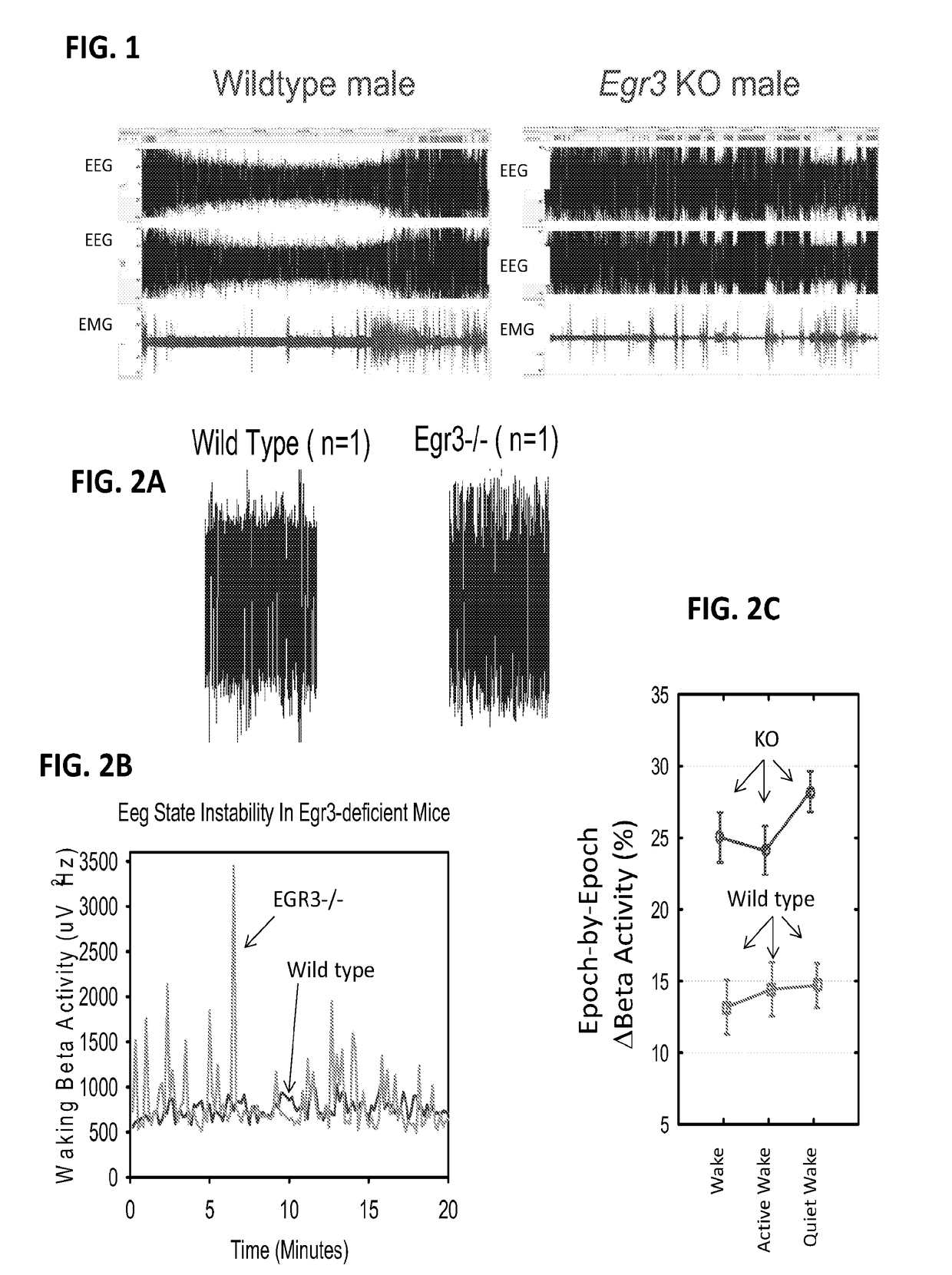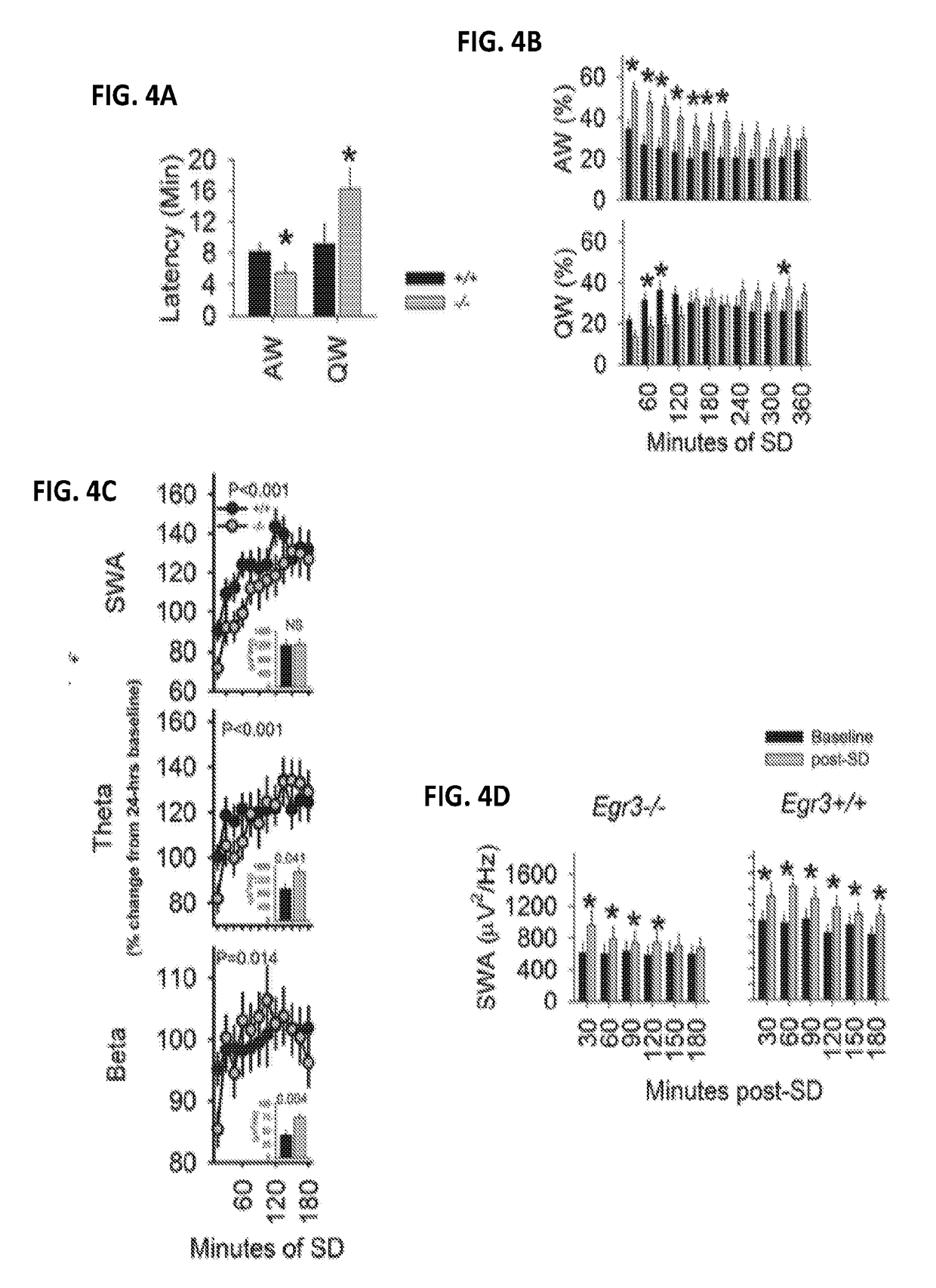Methods and systems for detecting psychotic disorders associated with serotonin 2a receptor deficiencies
- Summary
- Abstract
- Description
- Claims
- Application Information
AI Technical Summary
Benefits of technology
Problems solved by technology
Method used
Image
Examples
example 1
[0058]Example 1 describes an example of research used to help determine parameters for determining the level of sleepiness or sedation (or lack thereof) that is associated with schizophrenia or a lack of schizophrenia. EEG patterns in patients recently diagnosed with schizophrenia or schizophrenia-like disorders will be compared at baseline and after a typical dose of clozapine (or other antipsychotic medication). Subjects will undergo one to 5 hours of continuous videotaped EEG monitoring. Before and after drug administration, patients' somnolence will be rated using the Stanford Sleepiness Scale (SSS) and the Psychomotor Vigilance Task (PVT) (or other scale, e.g., ESS, CFM, FSS, POSS, etc.). Baseline and post-antipsychotic administration EEG and EMG recordings during both sleep and awake states will be read. Statistical analyses will be conducted to identify correlations between EEG response, scores on sedation assessments, and clinical diagnosis.
example 2
[0059]Example 2 describes an example of research used to help determine parameters for determining the level of sleepiness or sedation (or lack thereof) that is associated with schizophrenia or a lack of schizophrenia. EEG patterns in patients recently diagnosed with schizophrenia or schizophrenia-like disorders will be compared at baseline and after a typical dose of medication (e.g., ziprasidone, olanzapine, the like, combinations thereof, e.g., antipsychotics with receptor binding profiles designed to mimic the serotonin 2A receptor and dopamine D2 receptor binding profile of clozapine, etc.). Subjects will undergo 1 hour of continuous EEG monitoring (e.g., including continuous observation by at least one individual) before medication administration and 4 hours of continuous EEG monitoring (e.g., including continuous observation by at least one individual) after medication administration. Before and after drug administration, patients' somnolence or sedation may be rated using th...
example 3
[0060]A 35-year-old male presents to the emergency department complaining of hallucinations. The attending physician requests a psychiatry consult. The psychiatrist orders a test according to the present invention: the patient is administered a dose of olanzapine at time zero; thirty minutes following the administration of the medication, the nurse evaluates the patient. The evaluation comprises the following tests: (a) respiratory rate measurement; (b) oxygen saturation measurement; and (c) pulse measurement. Since the patient appears relatively alert, the evaluation also comprises an eye test wherein the patient is asked to keep his eyes open for 10 seconds. The patient's respiratory rate, oxygen saturation, and pulse are not significantly altered by the administration of the medication. The patient has no difficulty keeping his eyes open for more than 10 seconds. Based on the results of the evaluation, the psychiatrist diagnoses the patient with a high probability of having schiz...
PUM
| Property | Measurement | Unit |
|---|---|---|
| Time | aaaaa | aaaaa |
| Time | aaaaa | aaaaa |
| Time | aaaaa | aaaaa |
Abstract
Description
Claims
Application Information
 Login to View More
Login to View More - R&D
- Intellectual Property
- Life Sciences
- Materials
- Tech Scout
- Unparalleled Data Quality
- Higher Quality Content
- 60% Fewer Hallucinations
Browse by: Latest US Patents, China's latest patents, Technical Efficacy Thesaurus, Application Domain, Technology Topic, Popular Technical Reports.
© 2025 PatSnap. All rights reserved.Legal|Privacy policy|Modern Slavery Act Transparency Statement|Sitemap|About US| Contact US: help@patsnap.com



